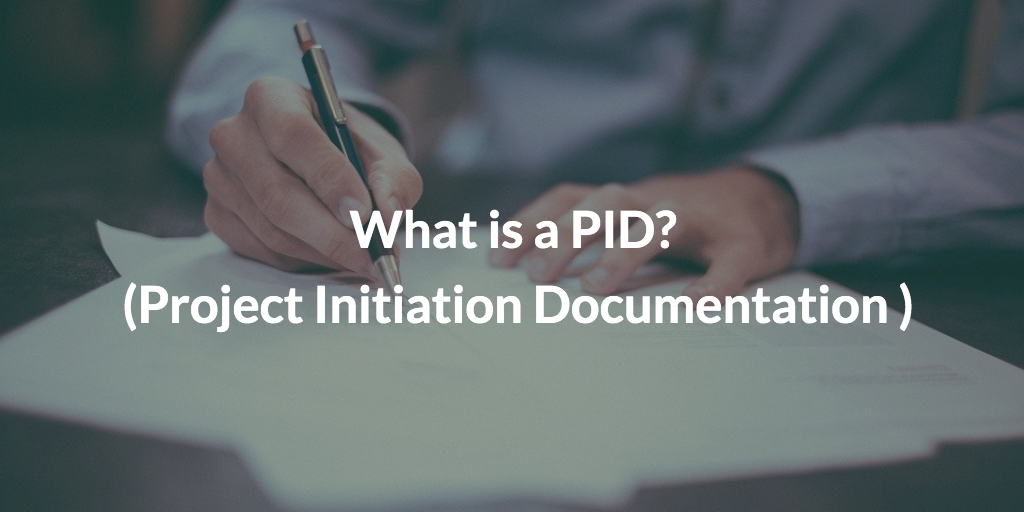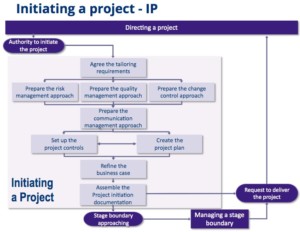How to write a PID (Project Initiation Documentation)?

The Project Initiation Documentation (PID) is one of the most significant artefacts in project management, which provides the foundation for the business project.
PID bundles the information, which was acquired through the Starting up a project and Initiating a Project processes in a PRINCE2 controlled project environment. The Project Initiation Document provides a reference point throughout the project for both the customer and the Project Team.
What’s a PID? PID’s Definition in PRINCE2 context
Within a PRINCE2-context the PID (Project Initiation Documentation) is a logical set of documents that brings together the key information needed to start the project on a sound basis and that conveys the information to all involved with the project.
What is the purpose of the Project Initiation Documentation?
The purpose of the PID is to define the project, in order to form the basis for its management and an assessment of its overall success. The PID gives the direction and scope of the project and (along with the stage plan) form the “contract” between the project manager and the project board.
The three primary uses of the PID are to:
- ensure that the project has a sound basis before asking the project board to make any major commitment to the project
- act as a base document against which the project board and project manager can assess progress, issues and ongoing viability questions
- provide a single source of reference for the project so that people joining the “temporary organization” can easily and quickly find out what the project is about, and how it is being managed.
The PID is a living product in that it should always reflect the current status, plans and controls of the project.
Its component products will need to be updated and re-baselined, to the extent necessary, at the end of each management stage, to reflect the current status of its constituent parts.
The version of the PID that was used to gain authorization for the project is preserved as the basis against which performance will later be assessed when closing the project.
PID Composition
The PID should include the following content:
- Project definition
Explains what the project needs to achieve (background, project objectives and desired outcomes, project scope and exclusions, constraints and assumptions, the user(s) and any other known interested parties and interfaces).
- Project approach
Define the choice of solution and delivery approach.
Click here to download your customizable Project Approach Questionnaire (PAQ)!
- Business Case
Describe the justification for the project based on estimated costs, risks and benefits.
- Project management team structure
A chart showing who will be involved with the project.
- Role descriptions
These describe the roles of those in the project management team and any other key resources
- Quality management approach
Describes the quality techniques and standards to be applied and the responsibilities for achieving the required quality levels.
- Change control approach
Describes how and by whom the project’s products will be controlled and protected.
- Risk management approach
Describes the specific risk management techniques and standards to be applied and the responsibilities for achieving an effective risk management procedure.
- Communication management approach
Defines the parties interested in the project and the means and frequency of communication between them and the project team.
- Project Plan
Describes how and when the project’s objectives are to be achieved, by showing the major products, activities and resources required on the project. It provides a baseline against which one can monitor the project’s progress, management stage by management stage.
- Project controls
Summarizes the project-level controls such as management stage boundaries, agreed tolerances, monitoring and reporting.
- Tailoring of PRINCE2
A summary of how PRINCE2 will be tailored for the project.
PID Chronological Order
Project Initiation Documentation Derivation
The PID includes the information available in the project brief. Indeed, the project brief describes the purpose, the cost, the deadlines, the performance requirements and the constraints of a project. It is developed before the start of the project during the Starting up a project process and used throughout the Initiating a project process to create the PID and its components.
It is then replaced by the PID and is not kept. A project brief includes the following:
- project definition,
- outline business case,
- project product description,
- project approach,
- project management team structure,
- role descriptions,
- references.
These essential elements of the project brief are therefore included in the PID and supplemented with new elements obtained after:
- Discussions with users regarding requirements,
- Discussions with suppliers for input on methods, standards and controls,
- Discussions with the business regarding value for money.
The Project Initiation Documentation consists of almost all the management documents from the Initiation Stage except the Benefits Management Approach as this comes to life after the project and is not archived with the other project documents.
PID Format and presentation
The PID could be:
- a single document
- an index for a collection of documents
- a collection of information sources in a project management tool.
QRP International regularly provides customizable templates to download for free in order to help you in the development of your management products.









